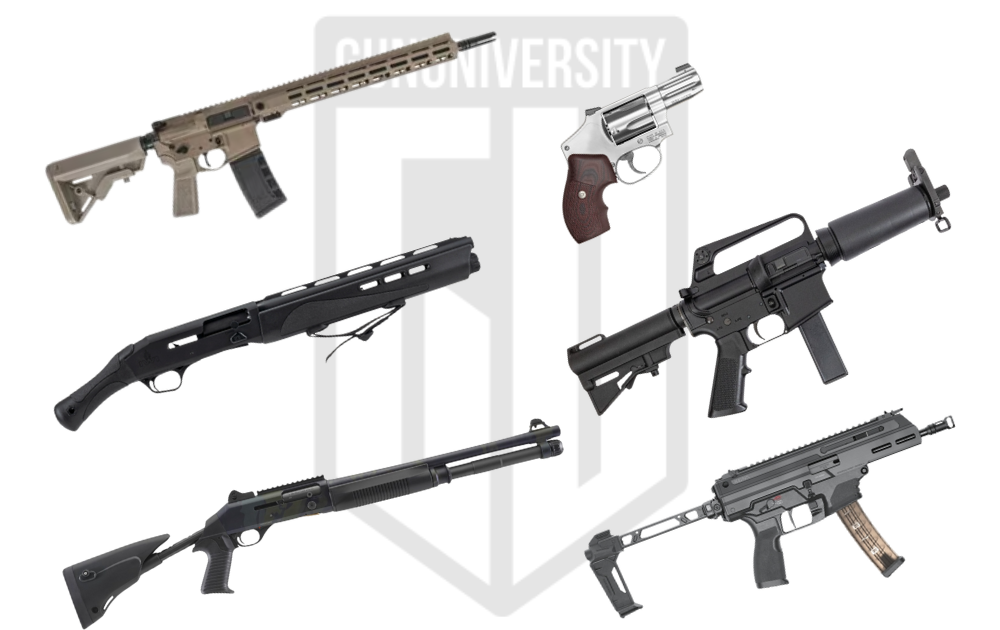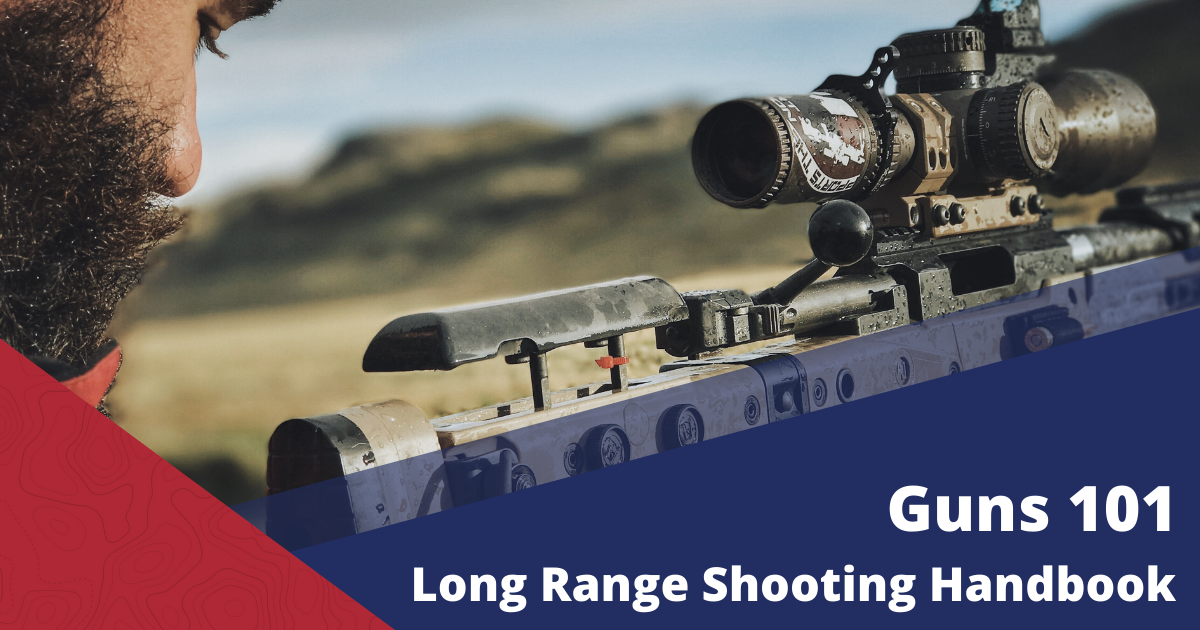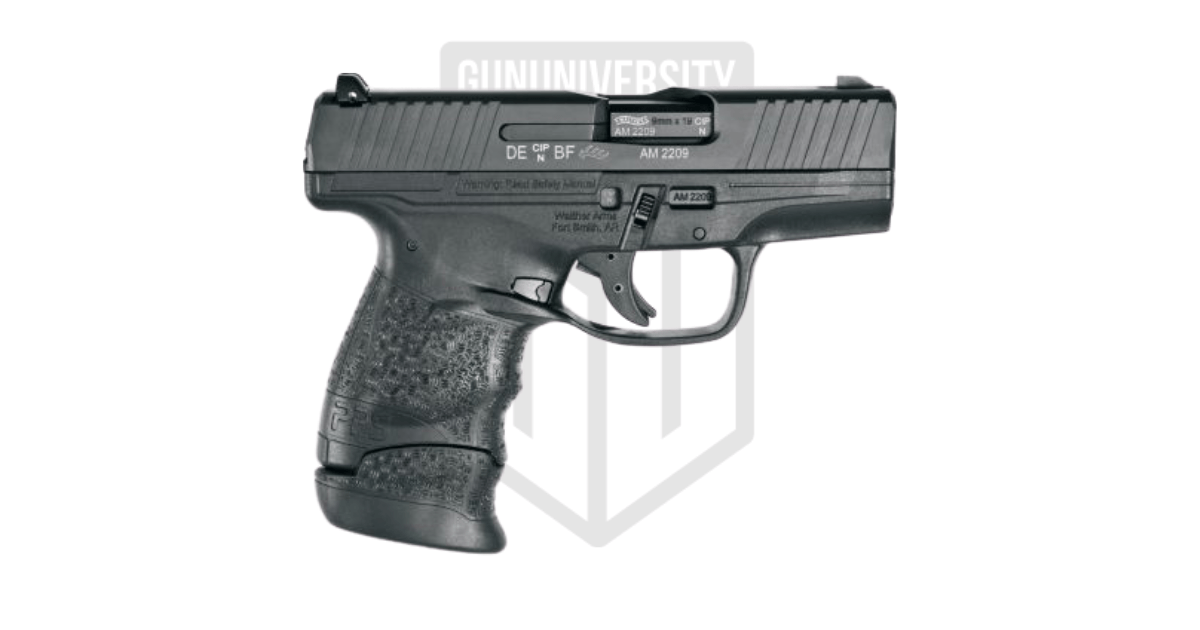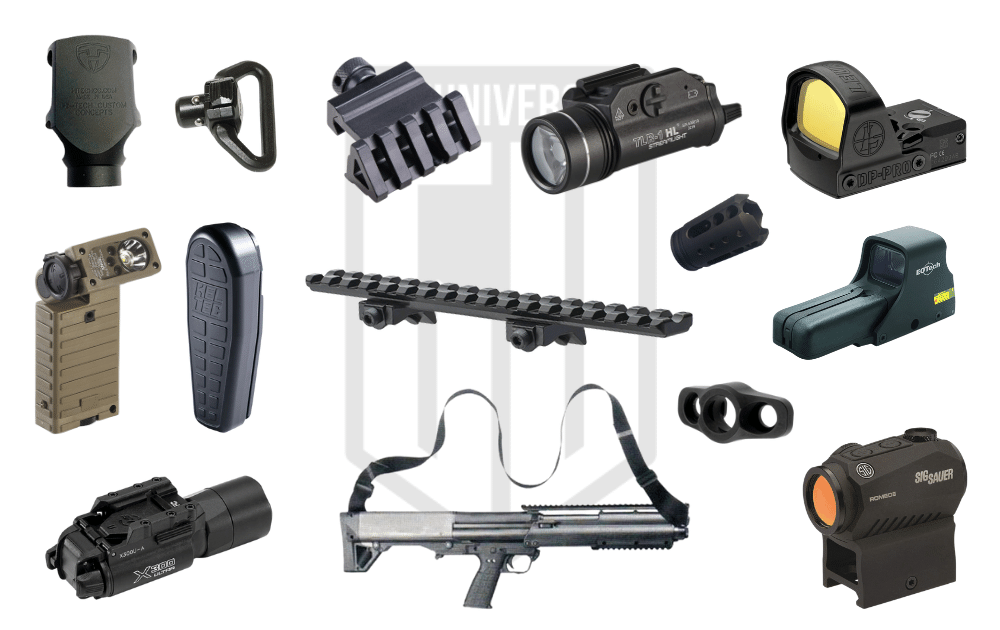Best 9mm Ammo
In the last few years the 9mm cartridge as risen to dominate the firearm industry. Calibers like .40 S&W have all but disappeared and .45 ACP has taken a big step back. The 9mm round delivers an extremely capable projectile and as ammunition technology improved the round took the top spot. Today we are going to explore that technology and take a look at some of the best 9mm rounds the market has to offer.
Why 9mm Rules
What does 9mm do that all these other cartridges can’t? First, it’s pretty dang affordable. It dates back to 1902 and the round has always been fairly popular. Since it’s popular its cheap to produce and sells well. The 9mm round really gained some steam from better metallurgy. Better bullets that penetrated deeper, expanded larger, and could keep up with the larer rounds.
At the same time the 9mm round also offered less recoil and you could fit more rounds in a magazine. Combine those factors together and the 9mm cartridge dominated the firearm market for a reason.
What’s The Best 9mm Ammo?
I’d have a lot less work to do if I could just name one best 9mm round, buts its just not that simple. The 9mm occupies a number of different guns and there isn’t just a best round. We have to factor in barrel length, gun size, purpose and more.
We’ll break it down one at a time and dig into the different cartridges, and pick the best option by specific purpose. I’ve gathered seven of what I feel are the best options by purpose.
Best 9mm Ammo
1. Duty-Sized Gun Hornady Critical Duty 9mm 135 Grain Flexlock JHPs | 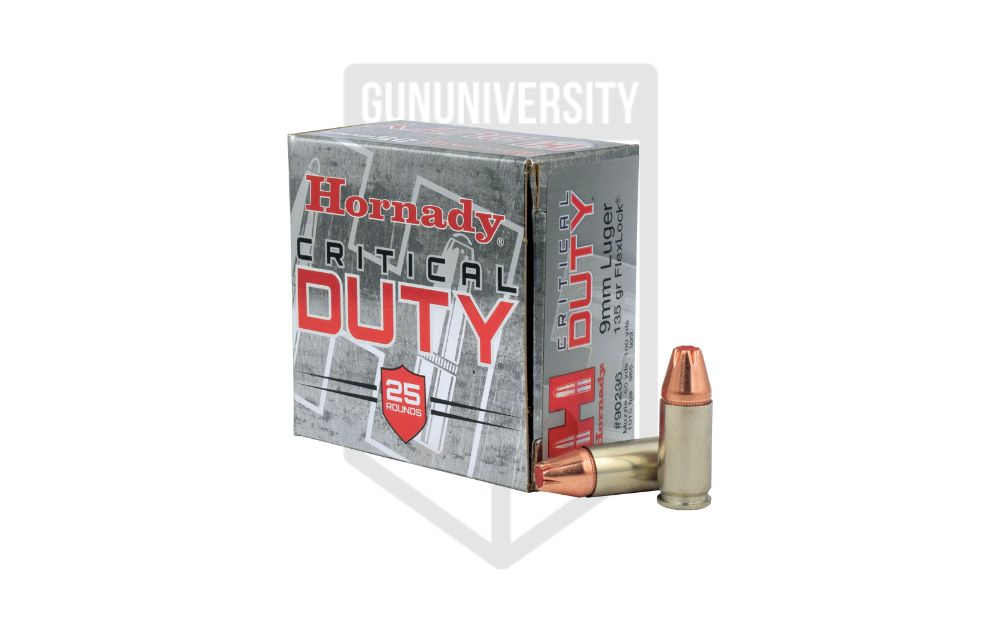 | Check Pricing |
2. Compact 9mms Winchester Ranger T-Series 147 Grain 2 | 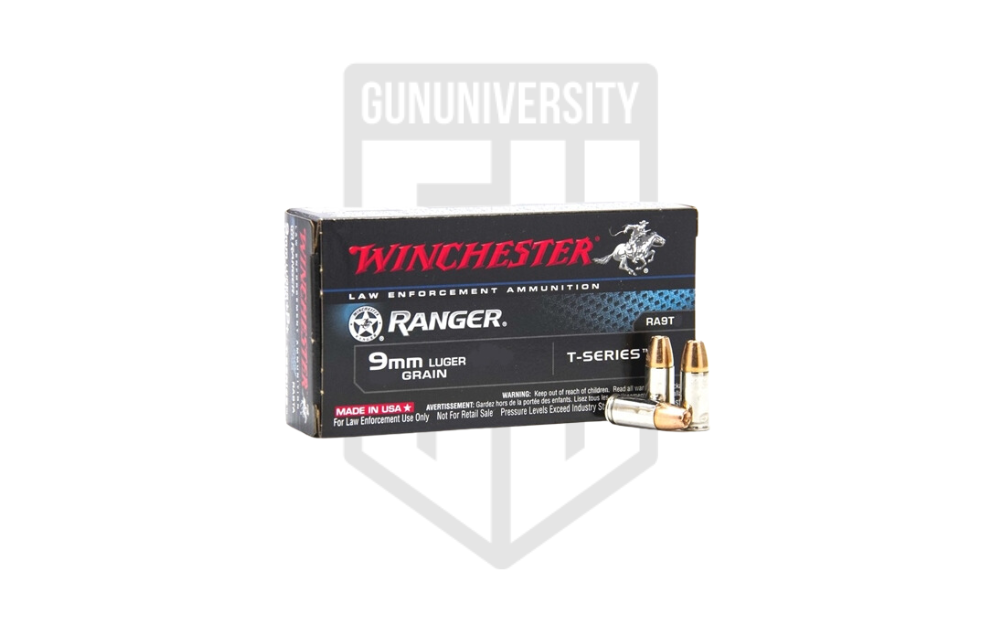 | Check Pricing |
3. Training Minded Speer Gold Dot 115 Grain | 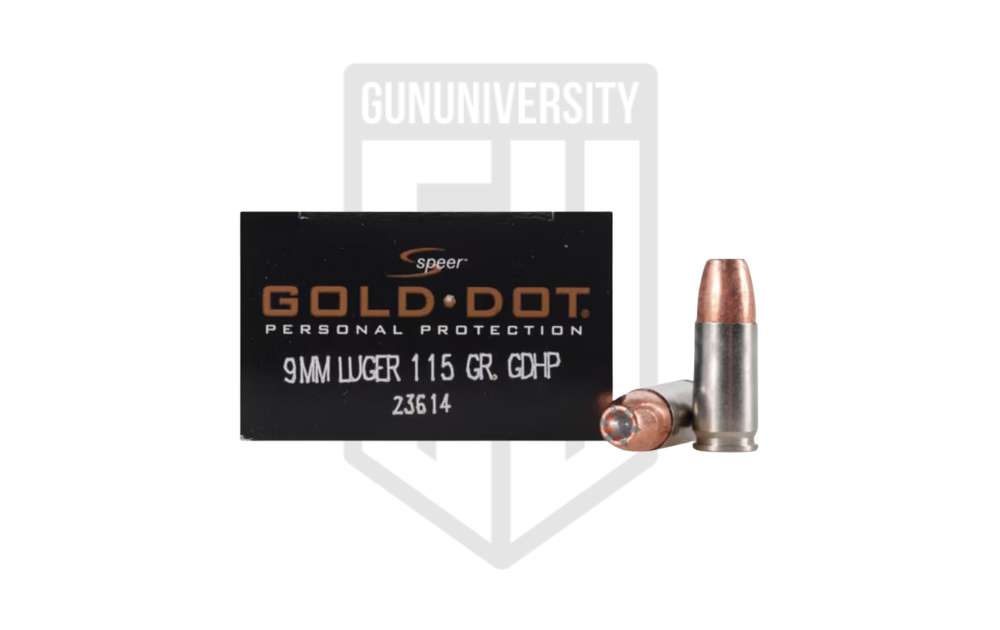 | Check Pricing |
4. Reduced Recoil Option SIG Sauer 365 V Crown 115 grain JHPs | 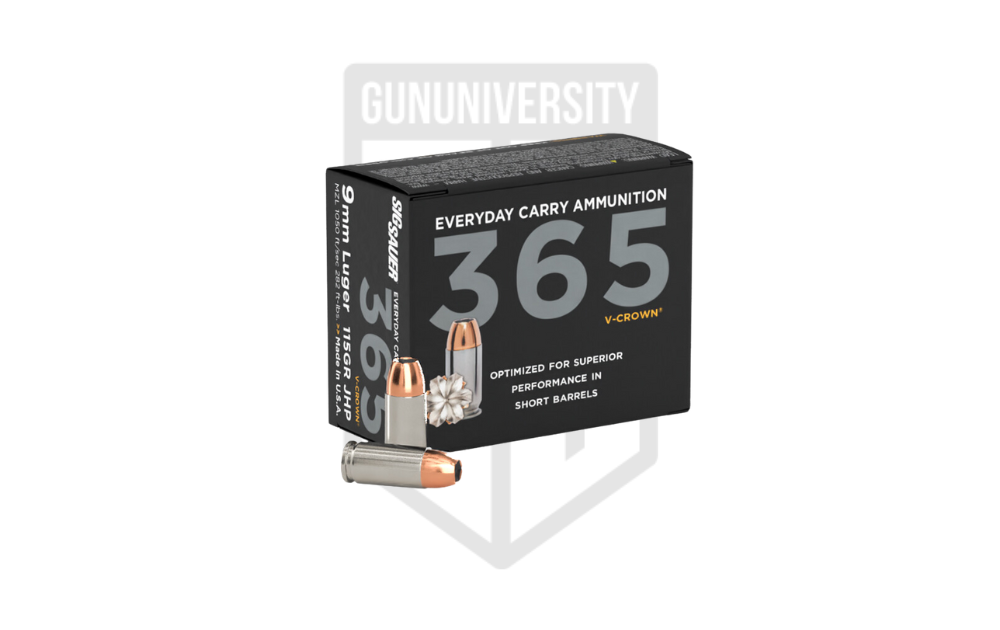 | On Amazon |
5. Four-Legged Predators Federal Premium Solid Core 147 Grain +P Loads | 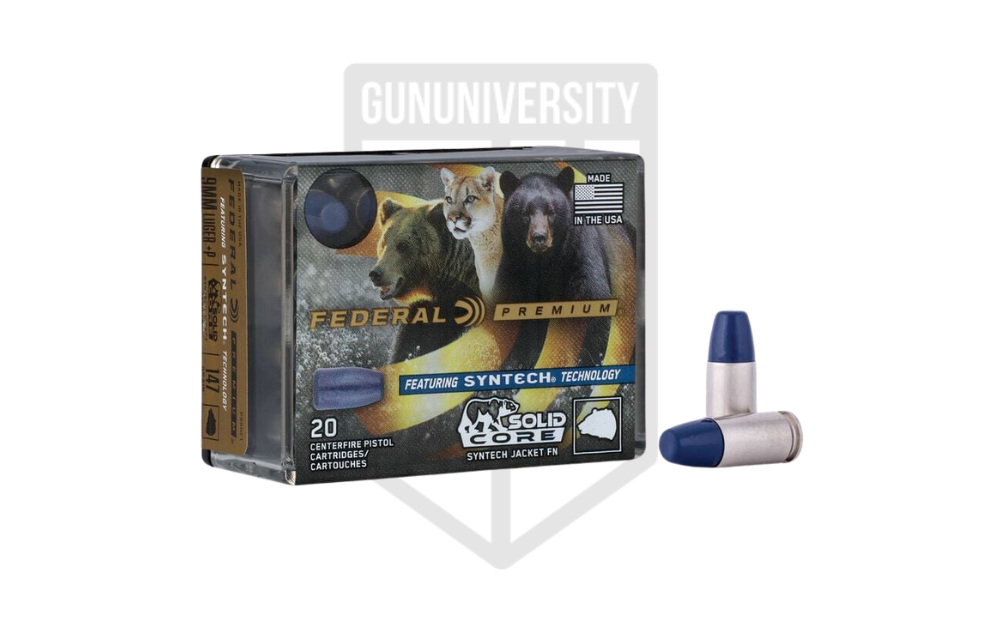 | Check Pricing |
6. Suppressed Home Defense Federal HST 147 Grain | 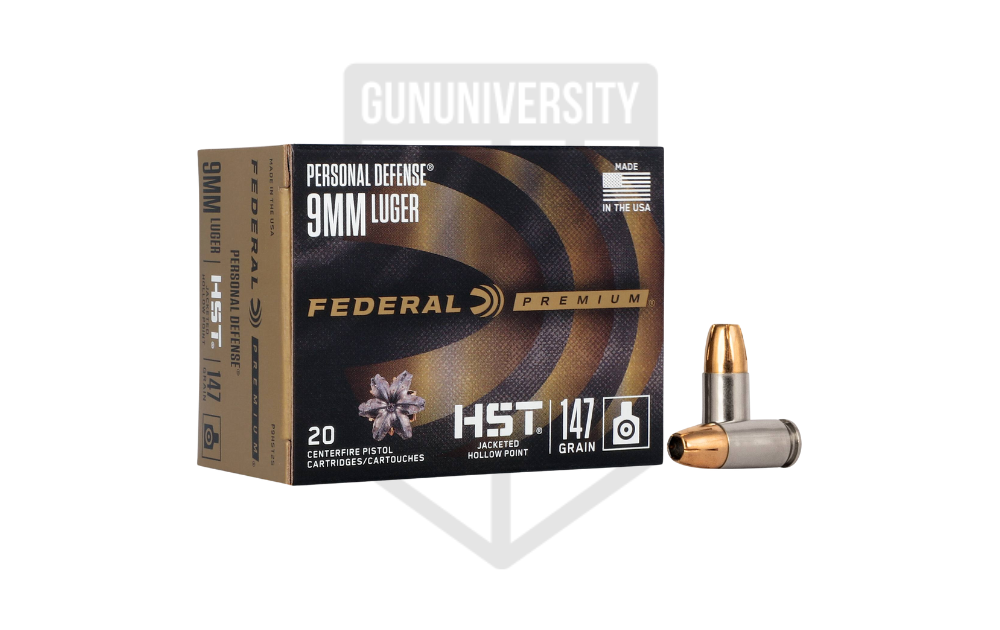 | Check Pricing |
7. Pistol Caliber Carbine Solution Speer PCC 135 Grain | 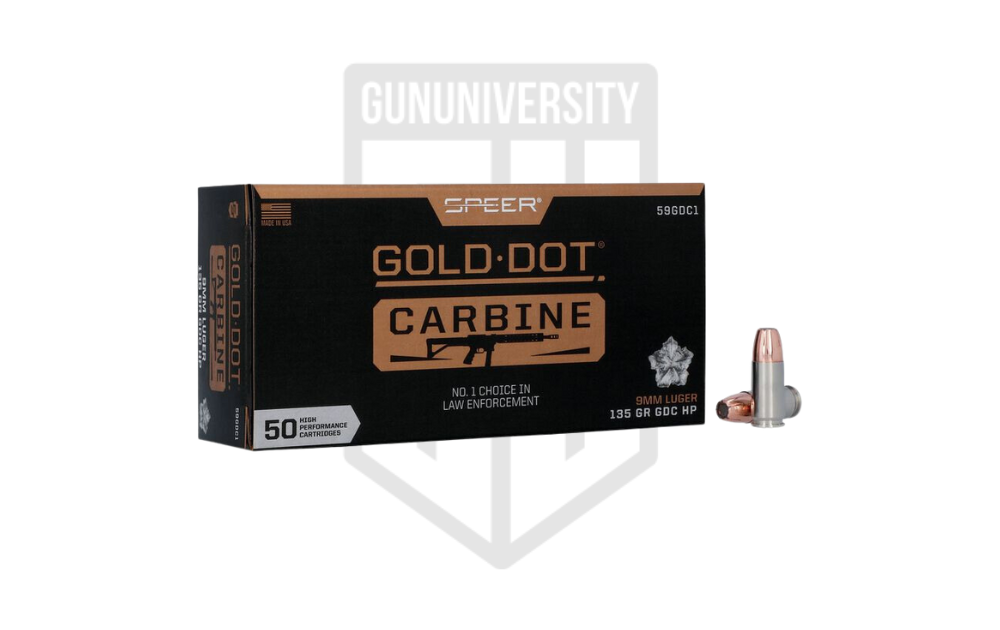 | Check Pricing |
Best 9mm Ammo
- Hornady Critical Duty 9mm 135 Grain Flexlock JHPs
- Winchester Ranger T-Series 147 Grain
- Speer Gold Dot 115 Grain
- SIG Sauer 365 V Crown 115 grain JHPs
- Federal Premium Solid Core 147 Grain +P Loads
- Federal HST 147 Grain
- Speer PCC 135 Grain
Best 9mm Reviews
Now that we’ve had an overview look at our list, let’s take some time to review each of these individually.
Hornady Critical Duty 9mm 135 Grain Flexlock JHPs
If you’re carrying a full-sized duty handgun, somewhere in the Glcok 17 to SIG P320 size, you should consider taking advantage of that size. Longer barrels and fuller grips offer less recoil, so you can handle some hotter, harder-hitting ammo. Ammo like the Hornady Critical Duty 9mm Flexlock JHPs. Hornady has a half dozen patents for these cartridges, and it’s designed explicitly with duty use in mind.
If you’re not a duty user but prefer a full-sized gun for its benefits, then the Critical Duty load is still a stellar option. Don’t let the Duty title make you think it’s inadequate for concealed carry. The heavier 135-grain projectile remains supersonic while adding a little extra weight to your projectile. The extra weight helps penetration, especially when dealing with heavy clothing or light barriers.
In fact, the Critical Duty 135-grain Flexloxk cartridges provide a barrier-blind cartridge with the benefits of a JHP. The Flexlock technology allows the round to go through a basic light barrier, but it still expands on contact with a soft target. The Flextip projectile means there is a little piece of soft material in the hollow point cavity. This keeps the projectile from clogging on clothing or barrier material.
The projectile also has a large mechanical jacket-to-core Interlock that keeps it together as it expands and travels through a soft target. This ensures excellent weight retention and consistent and adequate penetration, and it meets the FBI standards for penetration.
Rounds like this are designed to excel through full-sized guns. You might not get all the benefits of the Flexlock design with a shorter barrel. At more than a dollar a round, the ammo can get pricey very quickly, and that’s its main downside. Two mags of fifteen will set you back nearly seventy dollars.
Hornady Critical Duty 9mm 135 Grain Flexlock JHPs Pros and Cons
- Excellent Penetration
- Barrier Blind
- Great Expansion
- Expensive
Winchester Ranger T-Series 147 Grain Review
Winchester had to squash the Black Talon name for PR reasons, but the technology was too good to let go. They became the Ranger T-Series rounds and have proven themselves to be quite capable. Even the United States military recently adopted a Wicnehster hollow point that is conspicuously similar to the T-Series/Black Talon cartridge.
For compact-sized firearms, those in the Glock 19 size range, the T-Series projectiles in the 147-grain variation have proven to be quite successful. As barrels shrink, velocity lowers, and you want a heavier cartridge to ensure proper penetration. The big, heavy-duty 147-grain cartridge gives you that excellent overall penetration and exceeds the FBI’s stringent standards quite a bit.
Not only does the cartridge exceed standards for penetration, but it’s also quite capable of expansion. The projectile opens up when it hits a soft target and grows substantially in size. We are talking an average expansion of .70, about twice the size of a standard 9mm projectile. This expansion causes significant damage while preventing overpenetration. In terms of weight retention, it’s nearly perfect, which is impressive for such massive expansion.
The Winchester T-Series cartridges aren’t harsh in the recoil department. They are easy to handle in compact firearms and offer excellent reliability and accuracy. Winchester’s T-Series is often forgotten about in the self-defense ammo discussion, but it’s straight-up great stuff. In compact guns, it gives us the penetration and expansion we need to stop the threat.
I love these rounds, but Winchester tends to stick them behind a Law Enforcement-Only banner. Why is unknown to me. Luckily, they can be found online. Don’t expect them to be in retail stores. It’s annoying, but it’s worth the chase for top-quality defensive ammo.
Winchester Ranger T-Series 147 Grain Pros and Cons
- Excellent Expansion
- Great Penetration
- Controllable Recoil
- Hard To Find At Times
Speer Gold Dot 115 Grain Review
I bet if you look in the box, you will keep your 9mm ammo, and a box of 115-grain FMJs will meet your eye. The 115-grain FMJ is the world’s most popular 9mm training load. It’s the cheapest for sure, but also the easiest to find. In fact, finding anything outside of 115 grain can be tough. Sure, 124 grain rears its head, but the cheapest of us sticks to 115 grain ammo.
If you want a defensive ammo that matches your training ammo while still providing excellent ballistics, then the Speer Gold Dot 115-grain option is for you. Using 115 grain for training and 115 grain Speer Gold Dot for carry makes a lot of sense. Everything will be roughly similar. The rounds will have a similar degree of recoil, so you’ll know what to expect.
They’ll have roughly the same point of aim and impact. There might be variances, but they’ll be small enough to ignore at handgun distances. If you’re using something like a red dot, you can be comfortable knowing your training ammo zero matches your carry zero. Sure, you can look and find FMJs of every variety, but it’s cheaper to stick to 115-grain ammo.
The Speer Gold Dot brand has long been known for its effectiveness as a defensive cartridge. It’s one of the most popular choices for police use. The light 115-grain cartridge ensures the projectile has excellent velocity, and when it impacts a target, that speed turns into penetration and expansion.
The pressure-formed lead core is bonded to the jacket for weight retention. Since we already deal with a lighter cartridge, retaining every grain is valuable. This allows the projectile to penetrate deeply while expanding efficiently.
The lighter cartridge may suffer when used against barriers and thick clothing. It can still reach proper depth but is more likely to compromise expansion. The limitations of the 115-grain cartridge are still a reality.
Speer Gold Dot 115 Grain Pros and Cons
- Light Recoil
- Matches Training Ammo
- Excellent Expansion
- Subpar Barrier Performance
SIG Sauer 365 V Crown 115 grain JHPs Review
SIG talks about being a total systems provider, and they keep living up to that claim. They got into the ammo business years ago and have been producing a steady supply of plinking and range fodder mixed with defensive ammunition. While their ammunition is high quality and well made, one stands out above the rest. The SIG Sauer 365 V Crown JHPs are the perfect ammo if you are recoil-adverse.
Some of the best guns on the modern market are in 9mm. The 9mm cartridge is well known for its mild recoil, but for some, even a mild recoil of 9mm can be a bit high, especially for small guns. The SIG Sauer 365 ammo is designed to eb a reduced recoil round optimized to function in smaller guns. SIG makes the P365 with its 3.1-inch barrel, and the 365 name for this mamo is most certainly attached to the massive success of a gun.
The SIG Sauer 365 V Crown ammo is optimized for those 3.1-inch barrels we typically see on smaller-than-average guns. If you’re packing a P365, a Hellcat, or something of that size, this is the perfect ammo for you. The reduced recoil factor is no joke. It’s super comfortable to shoot offers you fast and effective follow-up shots, and aids those who might be a bit recoil-sensitive.
Less recoil means less power, so does that translate to less performance? For the average shooter, no, not really. The round still exceeds FBI standards for penetration and offers you impressive expansion. The little round is moving at a little more than 1050 feet per second with good expansion and excellent weight retention.
All that, with low muzzle flash, low recoil, and a rather pleasant small gun experience. The kicker comes down to barrier penetration. Through most fabrics, it’s fine. When we get into thicker materials, we start to see a loss of expansion but adequate penetration. Through thin barriers, we lose some penetration.
Barriers aren’t a major issue for most civilian concealed carriers, so it might be worth the trade-off. That will be up to you, but I’d be willing to bet most cartridges from small guns don’t do great through barriers.
SIG Sauer 365 V Crown 115 grain JHPs Pros and Cons
- Low Recoil
- Great Expansion
- Great Penetration
- Poor Barrier Penetration
Federal Premium Solid Core 147 Grain +P Loads Review
The 9mm isn’t known for its animal-stopping capability. Most folks prefer rounds like the .357 Magnum, the 10mm, and larger cartridges to stop four-legged threats. I will say 9mm wouldn’t be my choice for grizzly bears, but it’s still a solid option for smaller black bears, coyotes, hogs, and mountain lions. Specifically, it’s a good choice for those four-legged threats when loaded with Federal Premium Solid Core 147 grain +P loads.
The +P means a little more velocity. It’s outside the 9mm spec, to be sure. The 147-grain cartridges are typically subsonic rounds, but this Federal +P load squeezes out 1,120 feet per second. That’s a fast-moving, heavy pill. The projectile is made from high-antimony lead that’s designed to resist deformation.
This design and material, combined with the flat nose bullet design, allow the projectile to maintain a straight path as it tears through muscle, fat, and bone. This allows for excellent penetration through bigger, denser, and stronger threats than humans. The projectile will sail throug these threats and find those vitals as long as you put the shot where it needs to be.
The lead bullet is covered with the Syntech coating. That’s a polymer coating. The coating prevents lead fouling. This ammo can be used in a barrel with polygonal rifling without concern. It functions like standard FMJs in that regard. The Federal Soldi Core rounds are perfect for transforming your daily carry into a wood’s carry gun for most of the country.
The downside will be recoil as these 147-grain +P round snake your little gun snappy. It’s not quite the 9mm you’re used to. These rounds are also quite pricey. At 2 dollars a round, the ammo is costly as well. It’s a limited-purpose defensive round, but it serves a proper purpose and transforms your 9mm round into a serious critter-getter.
Federal Premium Solid Core 147 Grain +P Loads Pros and Cons
- Deep Penetrating Design
- Free of Lead Fouling
- Can Kill Large Animals
- Expensive
- Heavy Recoil
Federal HST 147 Grain Review
The only good thing inflation ever did was reduce the price of a Tax stamp to nearly nothing. This led to a massive rise in suppressor ownership, and they are absolutely everywhere these days. A suppressor can be an excellent home defense tool for anybody. Shooting a gun inside a building will permanently damage your ears. Mixing in a suppressor can take some of that sting out of the equation.
If you’re using a suppressor, you should use subsonic ammo. Supersonic cracks can ring your ears. If you’re using a suppressed 9mm and need subsonic ammo, you might as well get the very best subsonic load on the market, the Federal HST 147 grain. This is one of the most proven defensive loads and is an excellent option with or without a suppressor. The round’s use of the heavy 147-grain round makes penetration a nonissue.
This round meets and exceeds the FBI standard without overpenetration concerns. It uses a specialized hollow point design that prevents it from plugging up when passing through textile materials. Federal designed the cartridge to be barrier-blind and to dig through light barriers without sacrificing much expansion or penetration.
The jacketed hollow point has excellent weight retention and provides consistent expansion. The average expansion takes the round for roughly .35 caliber to .60. That’s a massive increase in size that devastates soft targets as it passes through them. The hefty bullet delivers where you want it.
The Federal HST loadings might be one of the msot proven options on the market. It’s been tested extensively and fielded by law enforcement around the country. Performance-wise, there aren’t many downsides, just the typical cost associated with premium ammunition.
We are getting a quiet, hard-hitting, and capable round for home defense from a suppressed firearm.
Factors to Consider When Buying a Reloading Scale
- Pros Subsonic Speed
- Deep Penetration
- Excellent Expansion
- Somewhat Expensive
Speer PCC 135 Grain Review
Denying the popularity of pistol caliber carbines is downright silly. For many, they offer a lightweight, capable weapon for self-defense. They are easily suppressed, easy to shoot, and can often take common pistol magazines. They’ve exploded in popularity in the alst few years and remain a popular option for home defense. The main problem with PCCs is pistol ammo.
Most jacketed hollow points are designed for pistol-length barrels. PCCs have 16-inch barrels. That length of the barrel gives 9mm a boost in speed, which sounds great. However, the round isn’t designed for that boost of speed. That extra speed often causes JHP expansion and penetration failures. It turns out that going too fast can be a problem.
Speer introduced the Gold Dot PCC load to solve this problem. This 135-grain 9mm cartridge is specifically designed around 16-inch long barrels. The Gold Dot G2 projectile is one long proven by this nation’s law enforcement officers. It’s a jacketed hollow point projectile that features an elastomer-filled nose. This prevents clogging when passing through thick clothing and allows it to eb barrier blind.
The round sails through both with ease, but when it strikes a soft target, the round can expand widely and penetrate deeply. Speer engineered this specific load to guarantee expansion and penetration through a 16-inch or close to 16-inch barrel. It can take the extra velocity and make it useful rather than a hindrance. The 135-grain bullet is still moving at an impressive 1,170 feet per second.
Pistol caliber carbines offer more range than a handgun, and the bullet makes use of that. The round drops slower than most 9mm rounds. Out to 100 yards, it drops about eight inches. For reference, your typical 9mm round drops to about a foot at this range. At 50 yards, we have less than an inch of drop; at 75 yards, we see 3.4 inches of drop. Not bad for a pistol round.
The Speer Gold Dot PCC loads pgieonholds itself to a rifle platform. I doubt we’d see the same good ballistics, penetration, and expansion from a handgun. In a pinch, it might do, but I’d keep my PCC ammo and my handgun ammo separate if I took this route.
- Optimized for PCCs
- Great Range
- Excellent Effects on Target
- Expensive
- Pigeonholed to PCCs
The World, 9mms At a Time
The world of 9mm is a big one with plenty of awesome options. There are options for defensive shooting, competition, plinking, and even dealing with big, dangerous animals. Hopefully, we’ve given you a few suggestions on where to get started and what to load your 9mm of choice with. Do you have any favored 9mm rounds? If so, please share below!
Recent Posts
December 15, 2025
December 15, 2025
December 12, 2025
December 12, 2025

